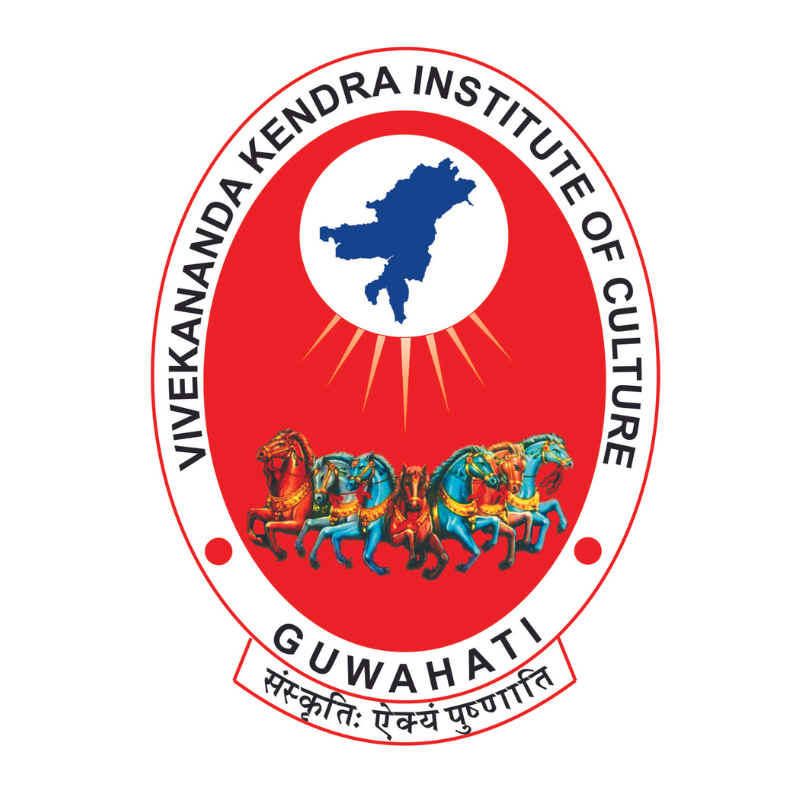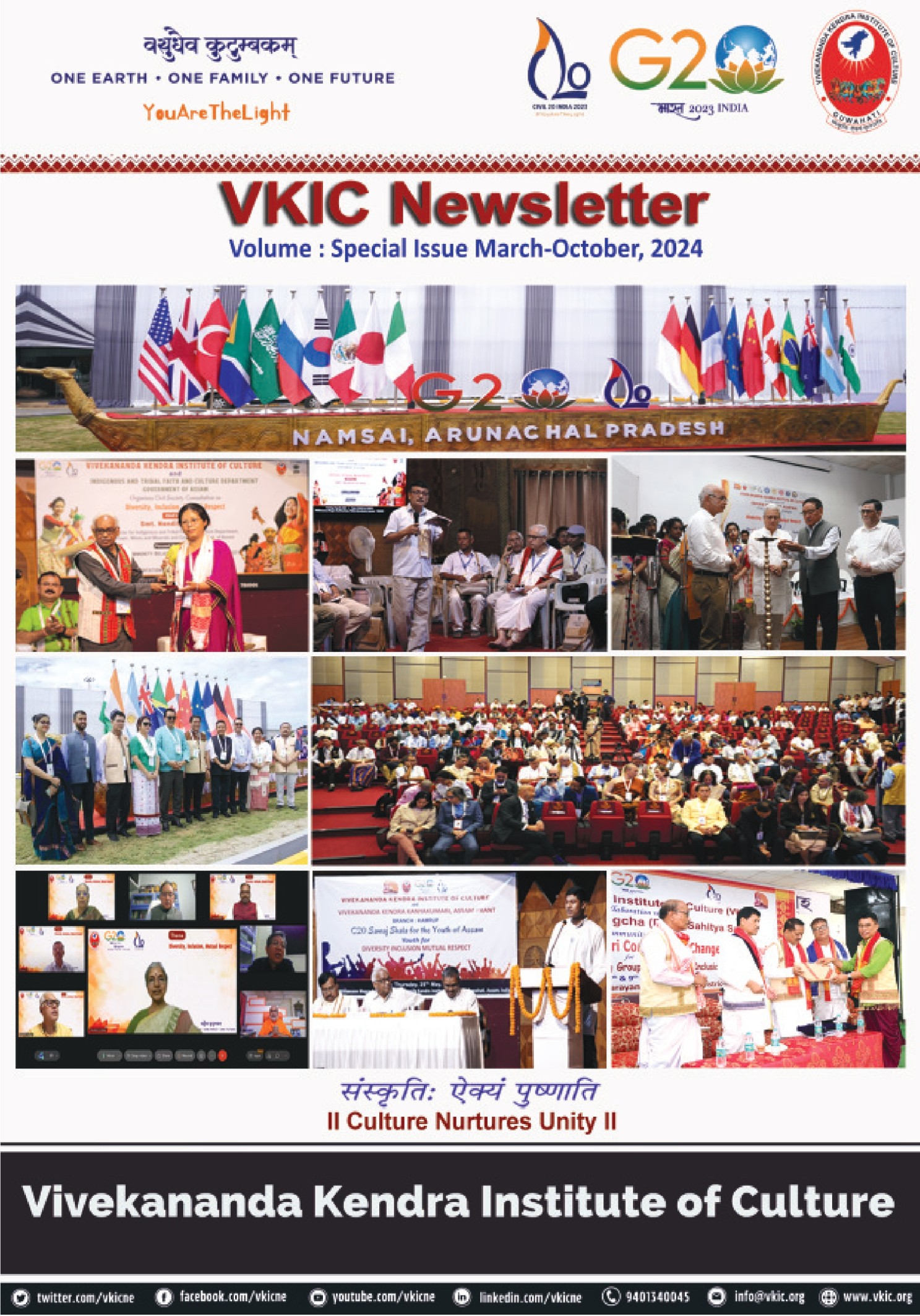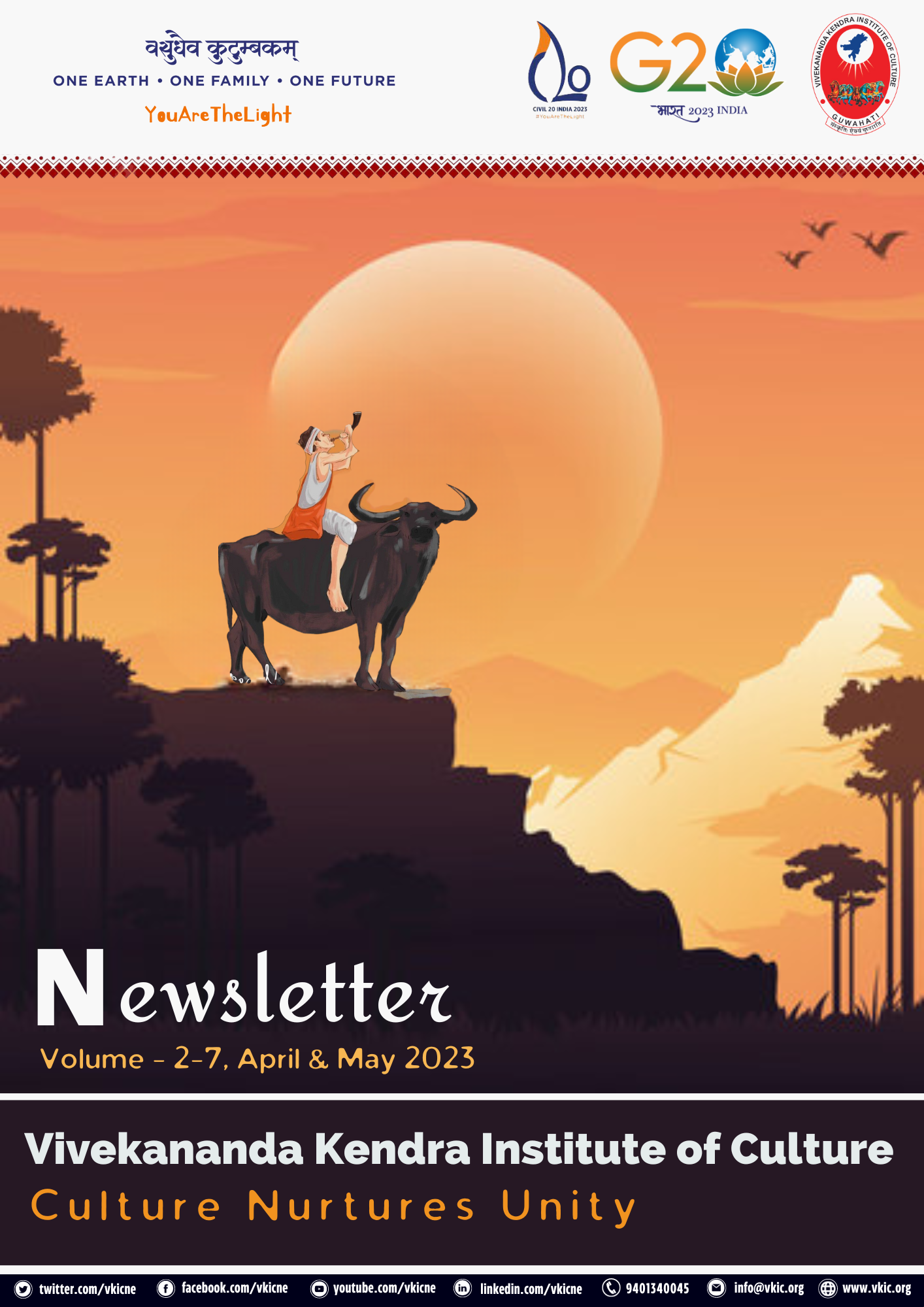India, this land of ours, is an independent, sovereign, democratic nation and there could be no two opinions about that. All the said aspects of this identity carry specific meanings. A distinct geographical boundary and a national culture give this identity a speciality. But, yet, this identity was jolted in the course of the last century. The boundary of the country shrunk yielding space to two separate nations, one after the other. This change has been acknowledged by the world. Still, the other two nations also agree that they belong to the Indian sub-continent. The oldest scriptures of the world, the Vedas of India, have discussed about a 'Rashtra' and their background is India or Bharata. The influence of the Vedic beliefs is confined to the bounds of India. The Vedas have discussed about endless topics, arts, sciences and also about kings and kingdoms, wars between one another, victories and defeats are also detailed. A king while preparing for a 'Rajasuya' sacrifice prays:
suryatvaca stha râstradâ râstram mê data svaha
Such kingdoms or small nations, but, have not been clubbed into any federation or being ruled by a "central government"!
The later epics have references to powerful rulers accepting tributes from defeated ones but not to any tributary kingdom.
Same way there is no reference to any appointment of a representative administrator to govern a vanquished state. Such systems came into practice only after Turks and Mughals invaded India and then took an organised form after the British conquered the country.
Ancient Indian kings let off a horse to wander across smaller kingdoms, known as 'Aswamedha' horse for an eventual sacrifice. Such small kingdoms surrendered their freedom, paid tributes to the winning king but did not lose their identities or entities. Readers may note that the two mighty kingdoms, Magadha and Kalinga fought a devastating war between themselves. One of the kings, out of remorse on seeing the enormous number of dead soldiers, abandoned his throne and embraced a new faith. The two mighty kingdoms are two states of present day India!
Asom, the name of our state, is relatively new. It was Pragjyotisha in ancient India. The two great epics knew it as such. The Vishnu Purana, said to be a 5th century work, called it Kamarupa. The 12th century work, Rajatarangini again, referred to this place as Pragjyotishpur. Both these works treated ancient Asom as a part of India. (Pragjyotishpur, Kamrupa)
In the Kiskindha Kanda of the Ramayana, instructing his ape troupe to go to various places, asked one group to come to this place for a search of Sita whom Ravana had abducted. She might have been kept hidden in any of the hill-caves, of beautiful Pragjyotisha ruled by Naraka.
Tatra Pragjyotisham namo jato rupamayam puram
Yasmin vasati dustatma narako nama danavah
This Naraka ruled Pragjyotisha was correctly pointed out, but there seems to have remained a discrepancy in directions.
The Mahabharata gives extensive details of Janapadas and sacred rivers of India or Jambudwipa, synonymous with Bharatavarsha. All the rivers, the epic says, are like mothers to all and givers of great boon – Viswasya matarah sarve sarvasca mahaphalah. The list includes Karatoya and Louhitya.
This epic also speaks of the Pragjyotisha king Bhagadatta in great detail. A friend of Pandu, Bhagadatta attended the wedding of Panchali, he attended Yudhisthira's Rajasuya sacrifice, took side with Duryodhana in the epic war ending his life there at the hands of Arjuna. At one place, the epic describes this hero as -
prâgjyotishadhipo viro bhagadatta pratapavân
gajânkusha dharo shrestho rathécavia vishâradah
He was an expert rider on elephant with the 'ankush' in hand besides being adept in driving a chariot. It is to be noted that people here were skilled in domesticating wild elephants, and also in the use of a "ratha".
The Vishnu Purana of 5th century calls this place Kamarupa. In this classical work, chapter 3 of the 2nd amsa, it is said:
Tâsvimé kuru- pânchâlâ madhyadeshâdayo janah
Purvadesa dikâccaiva kâmrupanivâsinah
The reference is to the various communities living on the banks of such and such rivers, and their tributaries, drinking the waters therof-âsâm nadyapandyacca-and like the Kurus and Panchals, the Kamarupa dwellers also sustained themselves and lived with amity and harmony. – âsâm pivanti salilam vasanti sahitâ sadâ
A rock inscription of the same century on the slope of the Kamakhya hills, known as the Umachal inscription, speaks of the dedication of a cave temple to Balbhadra, an epithet of Vishnu by King Surendravarman. The text is in Sanskrit and the script is Gupta alphabet of the Eastern variety, thereby amply indicating that the Indian classical language was known and used in that early period in ancient Asom. That itself counts Kamrup as a part of Bharat on the language context.
The seventh century Kamarupa king Bhaskarvarma gifted lands to more than two hundred Brahmins. Names of these donors and land measures with related details make these grants a very important historical document. Inscribed on copper-plates and written in Sanskrit the same are known as Nidhanpur Copper Grants. The deeds give specific names, refer to the existence of land survey system and revenue liabilities in the absence of a grant document, the "Gotra" or family names, their adherence to one or the other Veda. To sample a few names it may be read -
Kâtyâyânaccândoga manorathaswâmi, Krishnâtreya vâjasaneya
yasabhutiswâmi, yasko vâhrica dâmadevaswâmi,
bharadvâjasccândogo varunaswâmi - etc.
These indications to the Gotras, their Vedic following are ample evidence of Kamarupa falling within the reach of Indian cultural heritage.
This Kamarupa king finds mention in Banabhatta's Harshacarita and the Chinese travelling monk Hiuen Tsiang discussed him in detail in his travel accounts. His records are considered as very important historical documents by historians all over the world. A few lines from these accounts in Samuel Beal's English translation may interest our readers.
"...the land lies low, but is rich and wild and is regularly cultivated. The manners of the people simple and honest. Their language differs a little from that of mid-India. Their nature is very impetuous and wild; their memories are retentive, and they are earnest in study…”
This is only an instance of his impressions about Kamarupa and the people. He had noticed a linguistic difference between Kamarupa and "mid-India". He made the same observation about Kalinga too.
Rajatarangini, the history of the Kashmir kings in Sanskrit verse, is the work of Kalhana of the 12th century. There too is a reference to Pragjyotisha. The Kashmir prince Meghavahana came to Pragjyotisha on orders of his father to attend the swayambara of the Pragjyotisha princes Amritaprabha. There is also the mention of the 'varuna catra' the heavenly parasol, a royal property of the Bhauma kings of Kamarupa. These references make it clear that the Kashmir poet had a fair knowledge about Kamarupa and its people. He had called Pragjyotisha a 'rastra':
Sa yuvâ piturâdeshad vaishnavânvaya janmanah
rastra prâgjyotishendrashya jaiou kanyâ swayambaré
tatra tam vârunacatram câyayâ raja sannidham
bhej varsrajâ râjakanyakâ ca-amrita prabhâ
It was believed that the varuna-catra was meant to be held open above the head of lordly-king only. The same varuna-catra is said to be talked about in several Puranas. This highly honourable royal parasol was sent by Bhaskarvarmana through his messenger Hamsabega to his friend king Harshavardhana of Kanauj.
This Rajatarangini was composed in the 12th century and almost in the same century came the Turks into India in menacing invasion of India. And again, simultaneously but without any link whatsoever, came into Asom "some people of the Shan race and founded a kingdom in Soumer region.
The same book further says "On the 15th day of Aghon of Saka 1150 Sukapha with his companions reached Lung."
Kashmir, Gandhar, Gujarat, Anga, Banga, Kalinga as also Pragjyotisha for that matter, were all parts of Bharata, not Shan.
While marching in, Sukapha subdued countless small such self administered villages as those of Chutias, Morans, Barahis, Kacharis and Nagas and the book adds "Our people did not bring their women along and therefore daughters of these people that we won became wives" (translated).
This Sukapha founded the Ahom kingdom, "on earth" in the eastern part of India. The Deodhai Asom Buranji says, "In the three years Lakmi Raimit, Mungkeo and Plakcheo, there was no king on earth." But then by the grace of Indra, two brothers Khunlung and Khunlai "descended by a ladder made of gold in a forest on earth."
They believed this part of the then Asom as the earth or "prithivi" and its first king Sukapha reigned here for 39 years and expanded his domain. His descendants ruled the place for six centuries but lost it all in the first quarter of the 19th century to the marauding Burmese invaders who had ruthlessly devastated the land. They came from the very same direction from which Sukapha himself came invading!
History has detailed all these in clear pictures. The horrors of the Burmese invasion remained etched on the psyche of the people of Asom, so much so, that its literature, almost in all genres, is laced with one or the other event that took place during the three and a half years of the torture.
The British then came in. They drove away the Burmese and themselves took over. The transition is documented in a deed known as the "Treaty of Yandaboo". This was signed between "...the Honourable East India Company on the one part, and his majesty the King of Ava on the other."
The treaty signed on the 24th February, 1826, did not feature a ruler of Asom, nor did it count Asom as an independent Kingdom.
Article 2 of this treaty said... "His majesty, the king of Ava renounces all claims upon, and will abstain from all future interference with, the principality of Assam and its dependencies, and also with contiguous petty states of Cachar and Jayntea...."
But about Manipur, the treaty stipulated that should Gambhir Shingh desire to come back... "...he shall be recognised by the king of Ava as Rajah thereof."
No king of Asom was named. There was also a Burmese version of the treaty wherein the signatories are named as the Governor General on one part and the king of Burma on the other.
Asom thus came under the dominion of the British. The new rulers offered Purandar Singh the rule of the place against a payment of Rs. 50,000/- per annum as fee to the British and he was treated as one in "Lalbandi". This 'king' remained a ruler for some time but failed. In the year 1838 Asom came totally under British dominion.
The British rulers, however, in a show of magnanimous governance, gave various land grants and pensions to former kings, princes, queens and officials. Moffat Mills, in his famous reports, gave extensive details of such gifts and grants. One interesting reference is of one Sham Phookan, a Burmese soldier who helped the British in chasing away the Burmese out of Asom, who was granted a monthly pension of Rs 25/-. A grant was recommended by Jenkins, Governor General's Agent, of Rs 20/- a month to Rupati Khatoniar, a kept of Ahom Prince Kameswar Singha. Most of these sanctions were made on receipt of petitions seeking the grace. A few, from some queens, are in print pleading "Looking to you as my father and mother..." in translation.
The foregoing should make it abundantly clear that Asom, Kamrup or Pragjyotish, by whatever name this place was known, has always been a part and parcel of Bharat - geographically, socially and above all, culturally. Various forces tried to disrupt this situation at different times but could not totally destroy the bond between the countless ethnic communities and their inherent cultural identity. That has been, again, abundantly established by the medieaval Vaishnavite reformers.
Still, during the course of the last two centuries, a section of the Bengali intellectuals, not agreeing to accept Asom's rich heritage with due respect and recognition tried to establish that all that Asom could boast of in the fields of art, culture and literature are but gifted by Bengal! A scholar and Indologist like Padmanath Vidyavinod even dared to propose that the people of Asom could benefit more if they agreed to concede that all their ancient literature are but of Bengali origin.
Strange as it may sound, that kind of an audacious proposal only confirms the intrinsic wealth of Asom's past.
But yet, there seems to exist a ceaseless effort from all quarters to deny Asom its rightful identity. Delhi helping this by always looking the other way. The most unfortunate aspect of this sorry state of affairs is that Asom could not produce a single leader who could make his voice heard with respect. Delhi's silent sanctions of settling millions of illegal migrants ONLY in Asom is the loudest pointer to this grievous neglect.
Was Badan Barphukan the great traitor, a Raktavija?
Article written by Shri Atulananda Goswami, an eminent litterateur from Assam and winner of Sahitya Akademi award 2006 is the Member of Research Council, VKIC and Editor of Vivek Jagriti, a quarterly bi-lingual megazine of Vivekananda Kendra.


